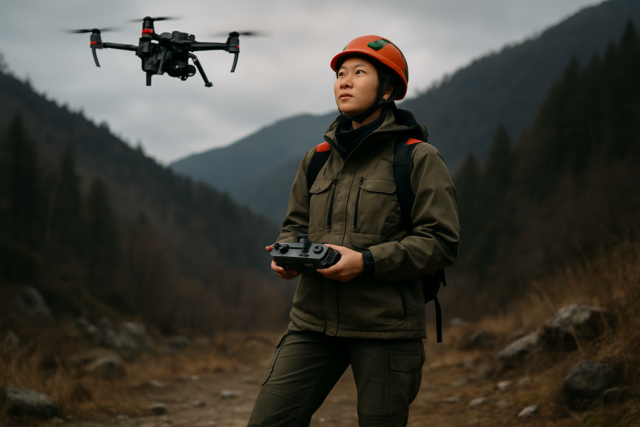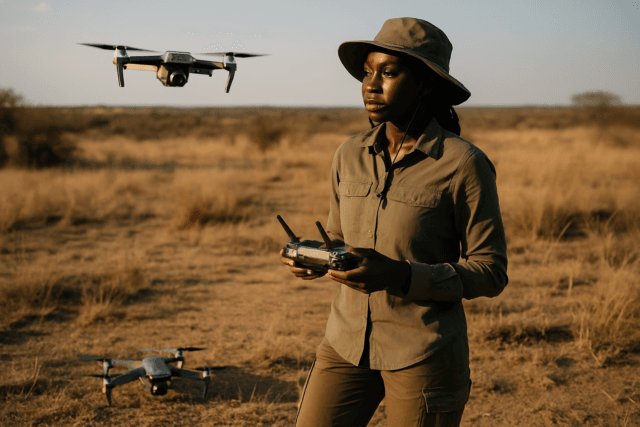Drones have become indispensable tools in search and rescue (SAR) operations, offering rapid aerial assessment and the ability to reach challenging terrains. However, operating unmanned aerial systems (UAS) in extreme cold weather presents unique challenges that require careful adaptation and specialized considerations to ensure mission success and safety.
Understanding the Impact of Extreme Cold on Drone Performance
Extreme cold significantly affects various components of a drone, leading to reduced performance and increased risks. Understanding these impacts is crucial for effective mitigation strategies.
Battery Performance Degradation
One of the most critical challenges in cold weather is the severe impact on lithium-polymer (LiPo) batteries, which power most drones. Cold temperatures slow down the chemical reactions within these batteries, leading to a significant decrease in efficiency, usable capacity, and overall power output. This can drastically reduce flight times, sometimes cutting them in half compared to warmer conditions. A sudden drop in battery voltage due to cold can even trigger early low battery warnings or lead to unexpected power loss and crashes. The optimal operating temperature range for most drone batteries is between 0°C and 30°C (32°F and 86°F), with noticeable performance drops below 10°C (50°F) and significant issues below -7°C (19.4°F). Some manufacturers, like DJI, specify operation down to -20°C (-4°F) for their more robust models.
Mechanical and Electronic Vulnerabilities
Beyond batteries, other drone components are susceptible to cold. Motors and propellers are prone to icing, which can lead to imbalance, reduced lift, and potential failure. Cold, dense air also increases the load on motors, reducing their efficiency. Sensitive flight control systems, including vision sensors, ultrasonic sensors, and the Inertial Measurement Unit (IMU), can be affected by snow, ice, and extreme temperature variations, potentially leading to errors. Condensation is another concern; moving a drone from a warm environment to cold air can cause moisture to form inside the aircraft, potentially damaging internal electronics and fogging camera lenses. Solder joints can weaken in the cold, increasing the risk of component failure.
Visibility and Sensor Limitations
Cold weather often brings adverse atmospheric conditions that impair visibility for both the drone’s sensors and the human operator. Fog, snow, and rain can drastically reduce the effectiveness of drone cameras and sensors, which rely on clear sightlines for navigation and object detection. Snow accumulation on sensors can obstruct their function, and its reflectivity can interfere with environmental data collection.
Pre-Flight Preparation in Extreme Cold
Thorough preparation is paramount for successful and safe drone SAR operations in extreme cold.
Battery Management and Care
Effective battery management is the most crucial aspect. Always start with fully charged batteries. Keep batteries warm before use by storing them in an insulated case, a heated vehicle, or close to your body (e.g., in jacket pockets). Some modern drones offer battery-warming features, which should be utilized. If unavailable, allow the drone to hover for 1-2 minutes after takeoff to gradually warm the battery. Avoid rapid charging in cold conditions; allow batteries to reach room temperature before recharging. Carry extra fully charged batteries, as flight times will be significantly reduced.
Drone Inspection and Maintenance
Before each flight, conduct a meticulous visual inspection of the drone for any physical damage, cracks, or loose connections. Pay close attention to propellers, ensuring they are free of chips, cracks, or ice. Wipe off any snow, ice, or liquid from the drone’s surface to prevent freezing during flight. Allow the drone to acclimate gradually when moving from a warm environment to the cold to prevent condensation. Regular professional maintenance checks are vital to detect and address any underlying issues accelerated by cold temperatures.
Equipment and Payload Considerations
Choose drones and payloads specifically designed for cold and harsh environments. Drones like the DJI Matrice 300 RTK/350 RTK, DJI Matrice 30T, and Autel EVO Max 4T are built to withstand extreme temperatures (down to -20°C / -4°F) and offer features like IP ratings for water and dust resistance, and in some cases, self-heating batteries. Thermal imaging cameras are essential for SAR in cold and low-visibility conditions, as they can detect body heat signatures through fog, smoke, darkness, and even dense foliage or snow. Other useful payloads include powerful zoom cameras, laser rangefinders, searchlights, and communication systems like loudspeakers or even IMSI catchers for locating mobile devices.
In-Flight Adaptations and Operational Procedures
Operating drones in cold weather requires adjusted in-flight strategies.
Shorter Flight Times and Conservative Battery Use
Expect significantly shorter flight times and plan missions accordingly. Be more conservative with battery life, avoiding prolonged flights at high speeds and landing with a higher remaining charge than usual (e.g., above 20%). Continuously monitor real-time battery voltage and temperature through the drone’s app. If rapid battery drain is observed, land the drone immediately.
Navigating Challenging Conditions
Strong winds, common in cold environments, can destabilize drones and shorten flight times. Monitor wind forecasts closely and adapt flight plans; in extreme cases, it may be safer to delay operations. If possible, increase stand-off distances from structures to avoid turbulent air currents, utilizing zoom cameras to compensate. Avoid flying in precipitation or fog where ice can build up on propellers and surfaces. Adjust camera settings for winter scenes, such as increasing shutter speed, slightly overexposing images, and setting white balance around 6500 Kelvin to counter blue tints and underexposure.
Human Factors and Pilot Safety
The cold can severely impact pilot performance. Shivering can make precise control inputs difficult, and prolonged exposure can lead to fatigue, impaired decision-making, and even hypothermia. Pilots and crew must dress appropriately in layers, including hats, gloves (touch-screen compatible for controllers), and waterproof outerwear. Consider operating from a heated vehicle if visual line of sight can be maintained. Bring hand warmers for both hands and keeping electronic devices warm. Continuously monitor crew members for signs of cold stress.
Post-Flight Procedures
Proper post-flight care is essential to mitigate cold-related damage and ensure drone longevity.
Upon landing, promptly wipe down any condensation or moisture from the drone’s surfaces to prevent electrical issues. Allow the drone and batteries to gradually acclimate to warmer temperatures to avoid condensation damage to internal electronics. Store the drone in a protective case in a dry, indoor environment, and store batteries at a partial charge (around 50-60%) for prolonged periods. Regularly inspect and maintain the drone and its components to address any wear and tear exacerbated by cold operations.
By proactively addressing the unique challenges posed by extreme cold, SAR teams can effectively leverage drone technology to enhance their life-saving missions, even in the harshest winter environments.





